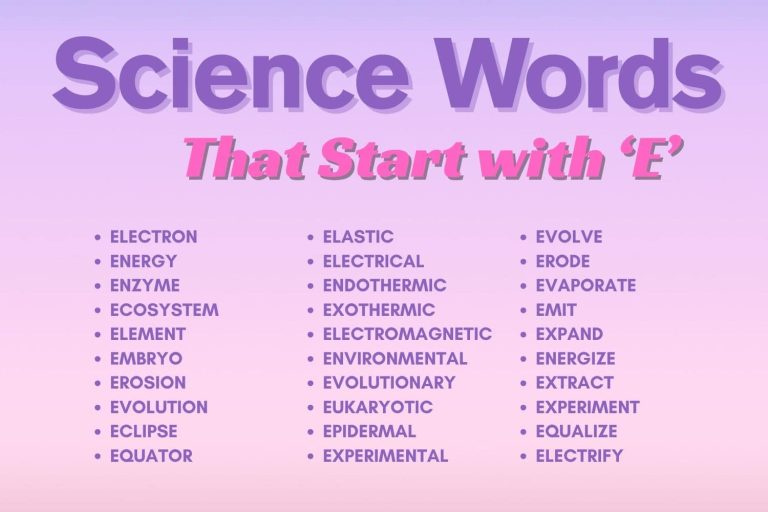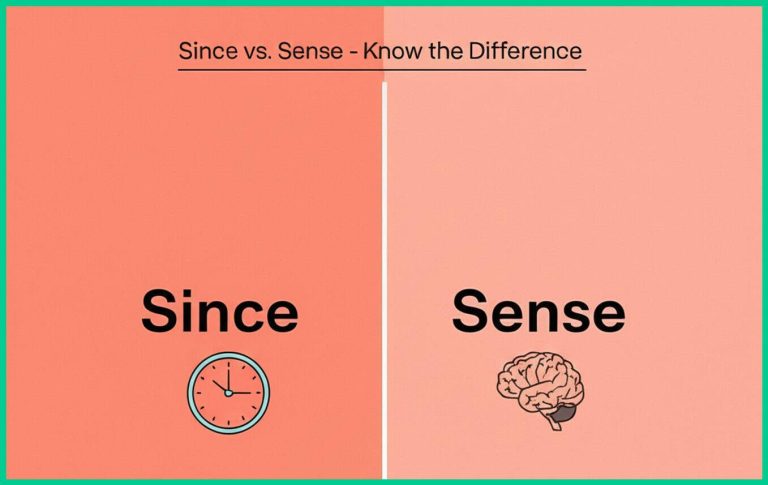Mastering Idioms for Reading Comprehension (With Examples)
Reading opens the door to imagination, knowledge, and endless possibilities — and the English language reflects this love for books through a variety of rich and expressive idioms for reading.
Whether it’s “cracking a book,” “burying your nose in a book,” or “reading between the lines,” these idioms go beyond literal meaning to convey habits, emotions, and insights tied to the act of reading.
These phrases are commonly used in everyday conversations, classrooms, literature discussions, and even professional settings to describe everything from reading styles to hidden messages in texts. They bring color and personality to the way we talk about books, learning, and comprehension.
This article will cover the definition of idioms, common idioms related to reading, how to use them correctly, common mistakes to avoid, practice exercises, and frequently asked questions. So, let’s dive in and unlock the secrets of reading idioms!
Examples of Idioms for Reading
An idiom is a phrase or expression whose meaning is different from the literal meaning of the individual words. Idioms are a vital part of any language, adding color, depth, and nuance to communication.
Comprehension Idioms: Examples
These idioms describe the level of understanding one has while reading.
- Read between the lines: To understand the hidden or implied meaning.
- Get the gist: To understand the main point.
- Miss the point: To fail to understand the main idea.
- Take something at face value: To accept something as it appears without questioning it.
| Idiom | Meaning | Example Sentence |
|---|---|---|
| Read between the lines | Understand the hidden meaning | The article didn’t explicitly state it, but I could read between the lines and tell they were in financial trouble. |
| Get the gist | Understand the main point | I didn’t read the whole report, but I got the gist of it from the summary. |
| Miss the point | Fail to understand the main idea | He completely missed the point of the lecture and asked a irrelevant question. |
| Take something at face value | Accept something as it appears | Don’t always take things at face value; try to verify the information. |
| On the same page | In agreement or understanding | Before we start the project, let’s make sure everyone is on the same page. |
| In black and white | In writing or print | I need to see it in black and white before I believe it. |
| Read someone like a book | Understand someone easily | She’s so predictable; I can read her like a book. |
| Take a leaf out of someone’s book | Imitate someone’s actions | I should take a leaf out of her book and start waking up earlier. |
| The writing is on the wall | A warning of future problems | With declining sales, the writing is on the wall for that company. |
| A closed book | Something you know nothing about | Quantum physics is a closed book to me. |
| Dot the i’s and cross the t’s | Pay attention to details | Make sure you dot the i’s and cross the t’s when filling out the application. |
| Get your wires crossed | Become confused | I think we got our wires crossed; I thought you were bringing the drinks. |
| Not have a clue | To not know anything about something | I don’t have a clue what he was talking about. |
| Make head or tail of something | Understand something | I can’t make head or tail of this instruction manual. |
| Grasp the nettle | Tackle a difficult task | It’s time to grasp the nettle and deal with the problem head-on. |
| See the forest for the trees | Understand the overall situation | Sometimes you need to step back to see the forest for the trees. |
| Under one’s nose | In plain sight | I was looking everywhere for my keys, and they were right under my nose. |
| Draw a blank | Fail to remember something | I tried to remember her name, but I drew a blank. |
| Put two and two together | Figure something out | I put two and two together and realized they were having an affair. |
| Learn something by heart | Memorize something | We had to learn the poem by heart for the exam. |
| Get the picture | Understand the situation | “Are you coming to the party?” “Yes, I get the picture.” |
| Rings a bell | Sounds familiar | That name rings a bell, but I can’t quite place him. |
| Jump to conclusions | Make a hasty judgment | Don’t jump to conclusions before you have all the facts. |
Reading Speed Idioms: Examples
These idioms describe how quickly or slowly someone reads.
- Skim through: To read quickly, without paying attention to detail.
- Read thoroughly: To read carefully and in detail.
- Flick through: To look at something quickly without reading it carefully.
| Idiom | Meaning | Example Sentence |
|---|---|---|
| Skim through | Read quickly without detail | I only had a few minutes, so I just skimmed through the newspaper. |
| Read thoroughly | Read carefully and in detail | You need to read the contract thoroughly before signing it. |
| Flick through | Look at something quickly | I flicked through the magazine while waiting at the doctor’s office. |
| Speed-read | Read very quickly | He speed-read the entire novel in one afternoon. |
| Browse through | Look through casually | I like to browse through the bookstore on weekends. |
| Race through | Read something very fast | She raced through the book to finish it before the meeting. |
| Plod through | Read something slowly and with effort | I had to plod through the technical manual; it was very dense. |
| Run one’s eye over something | Look at something quickly | I just ran my eye over the report to get a general idea. |
| Leaf through | Turn pages quickly | I leafed through the catalog to see if there was anything interesting. |
| Digest slowly | Read something slowly | The ideas in the book were difficult to digest slowly. |
| Wade through | Read something slowly | It took me a long time to wade through all the financial reports. |
| Scan through | Read quickly to find specific information | I scanned through the document to find the key points. |
| Rip through | Read quickly and energetically | I ripped through the novel because I couldn’t put it down. |
| Gallop through | Read rapidly | He galloped through the book in a couple of hours. |
| Zip through | Read something very quickly | I zipped through the article during my lunch break. |
Enjoyment of Reading Idioms: Examples
These idioms describe how much someone enjoys reading.
- Get lost in a book: To become completely absorbed in a book.
- A page-turner: A book that is so exciting that you want to keep reading it.
- Couldn’t put it down: Unable to stop reading a book.
| Idiom | Meaning | Example Sentence |
|---|---|---|
| Get lost in a book | Become completely absorbed | I love to get lost in a book on a rainy afternoon. |
| A page-turner | Exciting book you want to keep reading | The new thriller is a real page-turner; I couldn’t put it down. |
| Couldn’t put it down | Unable to stop reading | The book was so good I couldn’t put it down until I finished it. |
| Hooked on | Addicted to reading | I’m totally hooked on this series; I can’t wait for the next book. |
| A good read | Enjoyable book | That novel was a good read; I highly recommend it. |
| Devour a book | Read quickly with enjoyment | She devoured the book in just a couple of days. |
| Engrossed in | Completely absorbed in reading | He was so engrossed in his book that he didn’t hear me come in. |
| Rivet one’s attention | Hold someone’s attention completely | The story riveted my attention from the first page. |
| Be captivated by | Be charmed by something | I was captivated by the author’s writing style. |
| Lost in thought | Thinking deeply, often while reading | She was so lost in thought after reading the poem that she didn’t notice me. |
| Food for thought | Something to think about | The article provided a lot of food for thought. |
| Grab one | Excite or interest someone | The novel grabbed me from the very first page. |
| Suck someone in | Completely engross someone | The mystery novel sucked me in and I couldn’t put it down. |
| Well-written | Written in a good style | The article was very well-written and easy to understand. |
| Bring to life | Make something vivid | The author brought the characters to life with her descriptive writing. |
Difficulty in Reading Idioms: Examples
These idioms describe how challenging a text is to understand.
- A heavy read: A book that is difficult to understand or requires a lot of effort.
- Dense material: Complex and difficult text.
- Hard to digest: Difficult to understand or accept.
| Idiom | Meaning | Example Sentence |
|---|---|---|
| A heavy read | Difficult book to understand | That textbook is a heavy read; it takes a lot of effort to get through. |
| Dense material | Complex and difficult text | The article was full of dense material that was hard to understand. |
| Hard to digest | Difficult to understand or accept | The new theory was hard to digest at first, but I eventually understood it. |
| Greek to me | Completely incomprehensible | The technical jargon in the manual was Greek to me. |
| Over one’s head | Too difficult to understand | The lecture was over my head; I didn’t understand any of it. |
| Like wading through treacle | Very slow and difficult | Reading this report is like wading through treacle; it’s so slow and tedious. |
| Lose one’s way | Become confused | I often lose my way when reading complex academic papers. |
| A tough nut to crack | Difficult to understand or solve | This problem is a tough nut to crack; I’ve been working on it for hours. |
| Go in one ear and out the other | Easily forgotten | Everything he said just went in one ear and out the other. |
| Baffle someone | Confuse someone | The complex plot baffled me completely. |
| Clouded judgment | Difficulty in understanding something | His judgment was clouded by emotions, making it hard to understand the situation. |
| Muddy the waters | Make something unclear | The extra information only muddied the waters. |
| In a fog | Confused or disoriented | I was in a fog after reading that complicated document. |
| Mind-boggling | Overwhelming | The amount of information was mind-boggling. |
| At a loss | Confused or not knowing what to do | I was at a loss trying to understand the new software. |
Usage Rules for Reading Idioms
Using idioms correctly requires understanding their specific meanings and contexts. Here are some rules to follow when using idioms related to reading:
Contextual Appropriateness
Ensure that the idiom fits the context of the sentence and the overall tone of the communication. Using an informal idiom in a formal setting can be inappropriate.
Audience Awareness
Consider your audience’s familiarity with idioms. Avoid using obscure idioms that may not be widely understood, especially when communicating with non-native speakers.
Grammatical Structure
Maintain the correct grammatical structure of the idiom. Idioms often have a fixed structure, and altering it can change the meaning or make the expression nonsensical.
Literal vs. Idiomatic Meaning
Be aware of the difference between the literal and idiomatic meanings of the words in the phrase. Using the literal meaning when the idiomatic meaning is intended can lead to confusion.
Overuse Avoidance
Avoid overuse of idioms, as it can make your writing or speech sound unnatural or forced. Use them sparingly to add color and emphasis, but do not rely on them excessively.
Common Mistakes with Reading Idioms
Even advanced learners sometimes make mistakes when using idioms. Here are some common errors and how to avoid them:
Literal Interpretation
Mistake: Interpreting an idiom literally rather than understanding its figurative meaning.
Correct vs. Incorrect:
- Incorrect: “I read between the lines and saw actual lines.”
- Correct: “I read between the lines and understood the implied message.”
Misunderstanding the Meaning
Mistake: Using an idiom with a meaning that is different from its actual meaning.
Correct vs. Incorrect:
- Incorrect: “He was a closed book, so he was very open about his feelings.”
- Correct: “He was a closed book, so I couldn’t understand his feelings at all.”
Incorrect Grammatical Structure
Mistake: Altering the grammatical structure of an idiom.
Correct vs. Incorrect:
- Incorrect: “She lost in the book herself.”
- Correct: “She got lost in the book.”
Inappropriate Context
Mistake: Using an idiom in an inappropriate context.
Correct vs. Incorrect:
- Incorrect: (In a formal research paper) “The results were Greek to me.”
- Correct: (In a casual conversation) “The results were Greek to me.”
Practice Exercises
Test your understanding of reading idioms with these practice exercises.
Exercise 1: Fill in the Blanks
Choose the correct idiom from the list to fill in the blank in each sentence.
Idiom List: read between the lines, get the gist, miss the point, take it at face value, on the same page
| Question | Answer |
|---|---|
| 1. You need to _______________ to understand what he’s really saying. | read between the lines |
| 2. I didn’t read the whole article, but I _______________. | got the gist |
| 3. He completely _______________ and started arguing about something irrelevant. | missed the point |
| 4. Don’t just _______________; do some research to verify the facts. | take it at face value |
| 5. Let’s make sure we’re _______________ before we start the project. | on the same page |
| 6. After reading the confusing instructions, I still don’t _______________ what I’m supposed to do. | have a clue |
| 7. The warnings about the impending economic crisis were so obvious; _______________. | the writing is on the wall |
| 8. The legal jargon in the contract was _______________ to me. | Greek |
| 9. She _______________ and finished the entire novel in one day. | devoured the book |
| 10. The detective was able to _______________ and solve the mystery. | put two and two together |
Exercise 2: Matching
Match the idiom with its correct meaning.
| Idiom | Meaning |
|---|---|
| 1. A page-turner | A. Difficult to understand |
| 2. A heavy read | B. Completely incomprehensible |
| 3. Greek to me | C. Exciting book |
| 4. Get lost in a book | D. Memorize something |
| 5. Learn by heart | E. Become completely absorbed |
Answers:
- 1-C
- 2-A
- 3-B
- 4-E
- 5-D
Exercise 3: Multiple Choice
Choose the correct meaning of the idiom in the sentence.
| Question | Answer |
|---|---|
| 1. “I couldn’t put the book down; it was so exciting!” What does “couldn’t put the book down” mean? | A. Unable to stop reading |
| 2. “The article provided a lot of food for thought.” What does “food for thought” mean? | A. Something to think about |
| 3. “I just skimmed through the report; I didn’t have time to read it carefully.” What does “skimmed through” mean? | A. Read quickly without detail |
| 4. “I was so engrossed in the novel that I forgot about dinner.” What does “engrossed in” mean? | A. Completely absorbed in |
| 5. “The technical manual was over my head; I couldn’t understand any of it.” What does “over my head” mean? | A. Too difficult to understand |
| 6. “After the accident, everything he said just _______________.” | went in one ear and out the other |
| 7. “The amount of information was _______________.” | mind-boggling |
| 8. “I _______________ the book in just a couple of days.” | devoured |
| 9. “I tried to remember his name, but I _______________.” | drew a blank |
| 10. “The author _______________ with her descriptive writing.” | brought the characters to life |
Advanced Topics in Idiomatic Usage
For advanced learners, understanding the nuances of idiomatic usage is crucial. Here are some advanced topics to explore:
Idiomatic Variation
Some idioms have slight variations in wording that do not significantly alter their meaning. Recognizing these variations can help you understand idioms in different contexts.
Cultural Context
Many idioms are rooted in cultural or historical contexts. Understanding these contexts can provide deeper insights into the meaning and usage of idioms.
Idiomatic Creativity
While most idioms are fixed expressions, some writers and speakers may creatively adapt idioms to create new meanings or effects. Recognizing and understanding these creative uses of idioms requires a high level of language proficiency.
Distinguishing Idioms from Collocations
Collocations are words that frequently appear together but do not necessarily have a non-literal meaning. Distinguishing between idioms and collocations can be challenging but is essential for accurate language use.
Frequently Asked Questions
Here are some frequently asked questions about idioms for reading:
- Why is it important to learn idioms?Learning idioms is important because they are a common part of everyday language and literature. Understanding idioms will significantly improve your comprehension and communication skills.
- How can I improve my understanding of idioms?To improve your understanding of idioms, read widely, listen to native speakers, and use resources like dictionaries and language learning apps. Pay attention to the context in which idioms are used and practice using them yourself.
- Are idioms the same in all English-speaking countries?No, idioms can vary between different English-speaking countries. Some idioms are specific to certain regions or cultures. Be aware of these variations to avoid misunderstandings.
- Can I use idioms in formal writing?While idioms are more common in informal speech and writing, they can be used sparingly in formal writing to add emphasis or illustrate a point. However, choose idioms carefully and ensure they are appropriate for the context and audience.
- How do I know when a phrase is an idiom?If the literal meaning of a phrase does not make sense in the context, it is likely an idiom. Look for phrases that have a figurative or non-literal meaning.
- What is the best way to memorize idioms?The best way to memorize idioms is to use them in context. Create example sentences, practice using them in conversation, and review them regularly. Flashcards and spaced repetition techniques can also be helpful.
- How can I avoid making mistakes when using idioms?To avoid making mistakes, pay attention to the specific meaning and usage of each idiom. Use resources like dictionaries and language learning apps to check your understanding. Practice using idioms in context and ask native speakers for feedback.
- Are there any online resources for learning idioms?Yes, there are many online resources for learning idioms, including dictionaries, language learning websites, and apps. Some popular resources include the Oxford Learner’s Dictionaries, Merriam-Webster’s Learner’s Dictionary, and apps like Memrise and Quizlet.
Conclusion
With consistent effort, you’ll be able to confidently navigate the nuances of English and enjoy the richness and depth that idioms bring to communication.
Continue practicing, reading widely, and engaging with native speakers to further refine your understanding and usage of idioms. Happy reading!






